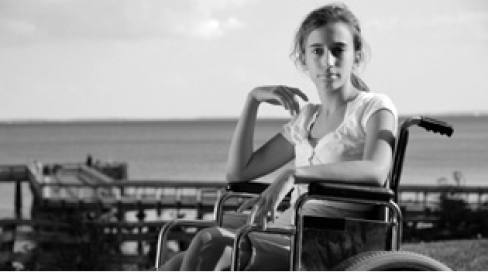Disability Considerations in Disaster Relief and Rebuilding: Guidance for Funders
Rationale and Benefits of Inclusion
- Inviting disabled and older people to be full, active partners in all aspects of emergency preparedness, response, recovery and mitigation benefits the whole community.
- Disabled and older people are experts on their own needs with unique skills and knowledge to contribute.
- Including agencies and institutions that address disability and aging issues in all aspects of emergency preparedness and disaster relief work is an important means of introducing universal strategies into practices that benefit the entire community. Strategies reflecting the needs and expertise of disabled and older people frequently integrate universal principles that benefit the broader population.
- The most comprehensive, inclusive and effective plans, policies, procedures and activities are those that ensure full accessibility and inclusion of disabled and older people. For example:
- Invite representatives of the disability and senior communities to provide input into all aspects of disaster planning, response and relief.
- Create a means of ensuring that (a) opportunities for input and dialogue are ongoing and (b) that reviews and testing of the plans, policies and procedures are built into the process.
- Incorporate principles of universal design into disaster plans, policies and procedures, and take into account legal requirements relevant to disability and aging.
- Make disaster relief and recovery plans, programs and outreach efforts available in formats accessible to people with disabilities and older adults — e.g., Braille, large print, audio tapes, etc.
- Build flexibility into policies and procedures during rescue and recovery so that operations can be readily adapted to meet the needs of disabled and older people.
- Make sure that emergency supplies reflect the diverse needs of the disability and aging communities for equipment and assistive devices or that there are funds to meet such needs.
- Media outlets can serve as allies in disaster relief efforts to ensure that emergency communication systems incorporate means of reaching people with sensory and other disabilities.
- Training curricula for rescue and relief personnel should:
- Integrate a range of strategies to meet the needs of disabled and older people, as well as information about the complex impact of emergencies on these groups.
- Invite disabled and older people with the necessary skills and background to train emergency personnel on disability and aging needs and how to respond to them.
Roles for Funders to Promote Inclusion of People with Disabilities and Older Adults
Grantmaking
- Fund projects that include or have a history of collaboration between mainstream organizations and disability and aging groups.
- Use proposal screening tools developed by disability and aging grantmaker associations when evaluating proposals for provision of emergency preparedness and disaster relief services.
- Create disaster relief efforts that make inclusion of the needs and issues of disabled and older people a priority.
- Fund efforts to create community-wide rosters of disabled and older people likely to need assistance in an emergency.
- Provide grants for specialized supplies such as accessible evacuation equipment; disaster supply kits that address disability and age-related needs; and equipment, aids and assistive technology to be used before, during or after a disaster.
- Offer funding for small or underfunded agencies with strong roots in the disability and aging communities and emergency/disaster expertise to cover the costs of their full participation in emergency planning.
- Provide financial support for teams made up of disaster personnel together with disability and aging experts to be sent to disaster sites.
- Support objective monitoring and evaluation activities to ensure that the needs of disabled and older people are adequately addressed in all aspects of disaster activities.
Convenings
- Ensure that all convenings reflect diverse aspects of local communities, including disabled and older people.
- Hold convenings in accessible facilities; make sure that the programs themselves are accessible and that all materials are available in alternative formats such as audio tapes, computer disks and Braille; provide interpreter services and/or listening devices for deaf and hard-of- hearing people.
- Where possible, take advantage of convenings to build connections and relationships among the disability and aging communities, emergency response groups and the media.
- Facilitate meetings among the media and the disability, aging and emergency responder communities to ensure that the media adequately address disability and aging issues and provide critical information in accessible formats.
- Facilitate meetings between trainers of disaster personnel and representatives of the disability and aging communities to ensure that disability and aging issues are incorporated into all training.
Public Awareness
- Help disseminate resources on emergency/disaster issues to the disability, aging and emergency communities and the media; include information on disabled and older people in print and electronic resources and press releases on disaster/emergency issues.
- Specifically mention people with disabilities and older adults in press releases to heighten awareness.
- Work with the media to encourage inclusion of disability and aging issues in their disaster reporting.
- Help ensure that resources, information, press releases, etc., on disaster/emergency issues are available in accessible formats.
Funders as Employers
- Include disabled and older people in your disaster preparedness planning group.
- Ensure that your disaster/evacuation plan addresses the needs of disabled and older people and is consistent with relevant legal requirements.
- Encourage all employees, regardless of age or disability status, to develop a personal support network, a disaster self-assessment, a personal disaster plan for home and work and a disaster supply kit.
- Offer your inclusive emergency preparedness plan, policies and procedures as a model for grantees.
Draft materials prepared by the Disability Funders Network (DFN)
April 1, 2006
DFN’s project to educate foundations and corporations on disaster relief needs of people with disabilities and older adults is funded by The New York Community Trust, Citibank, Mitsubishi Electric America Foundation, The Milbank Foundation for Rehabilitation, The Archstone Foundation, and Cingular Wireless.
 Disability Funders Network
Disability Funders Network
